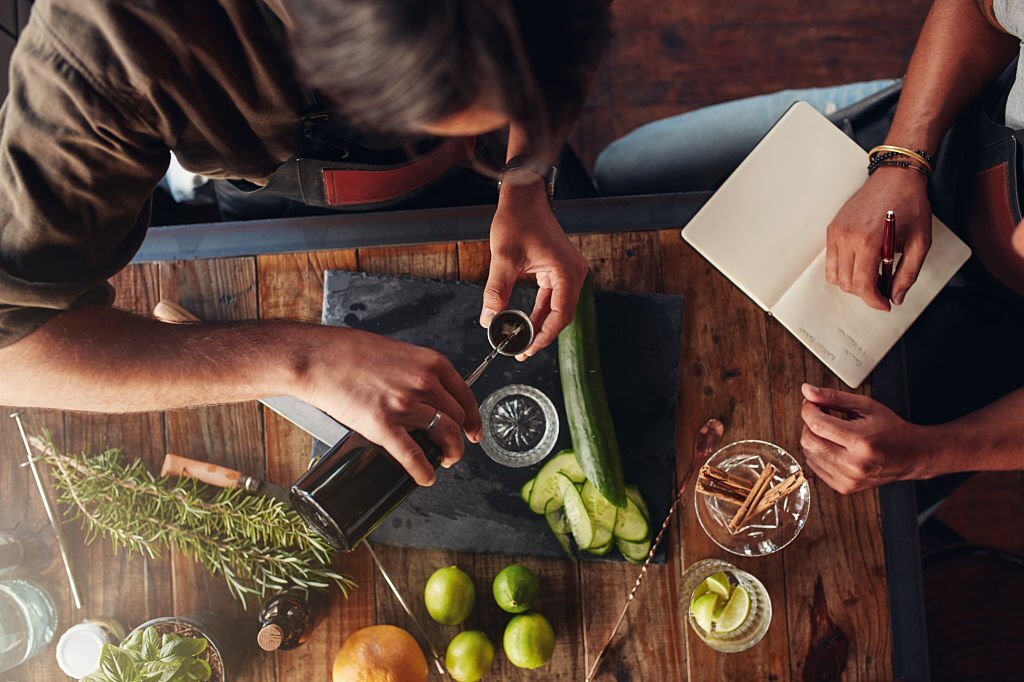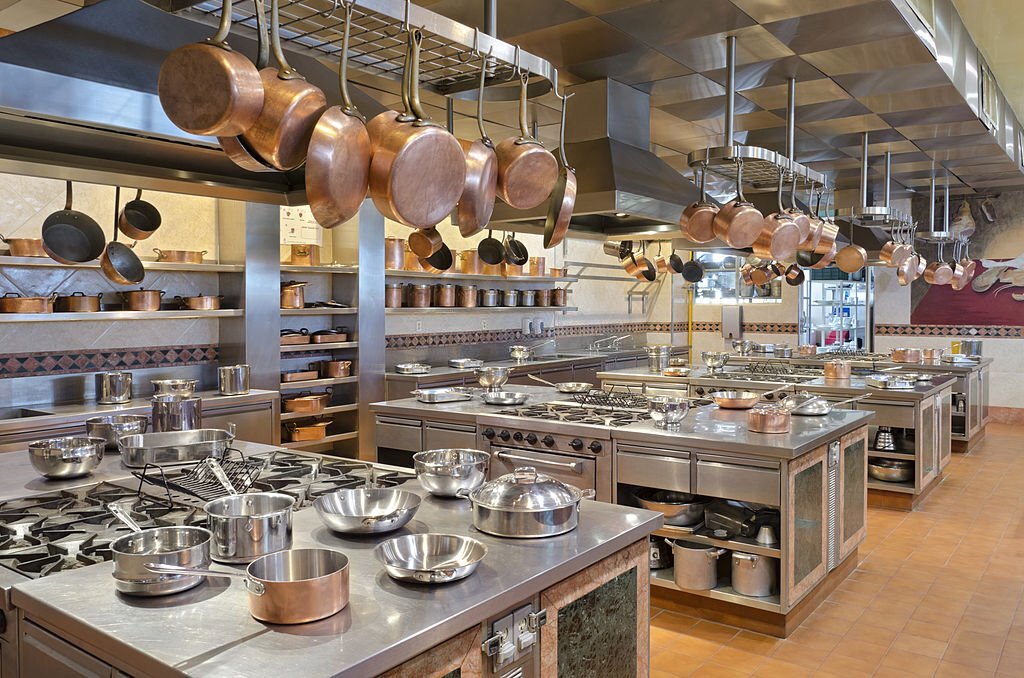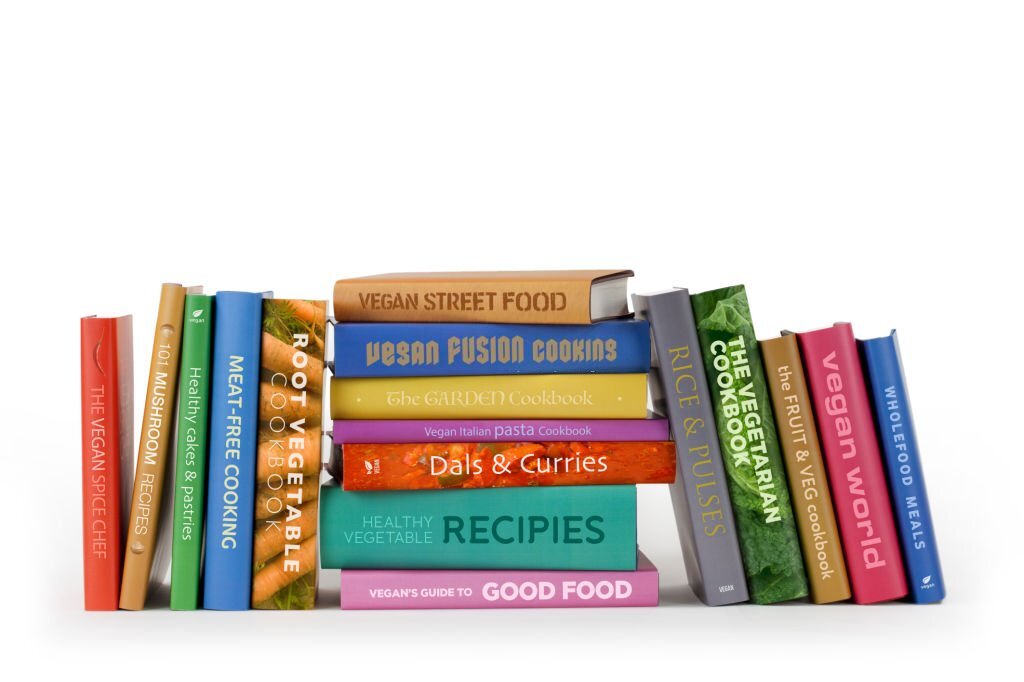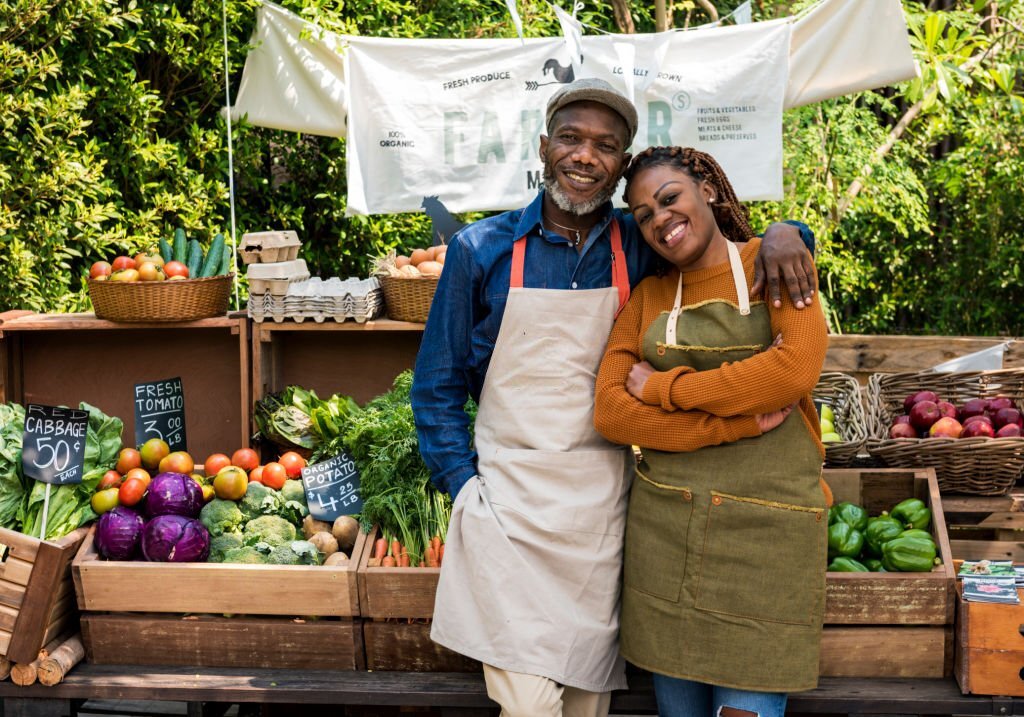Recipe development means creating new dishes for different uses, such as a restaurant menu, cookbook, or food product.
Companies typically hire a professional recipe developer to create good food by:
- Coming up with ideas
- Selecting and sourcing ingredients
- Testing and adjusting the recipe
- Documenting the final product
That third part, recipe testing, is key. Even the most experienced recipe developer must test their recipes to ensure they are delicious, visually appealing, and feasible to prepare.
Testing is also essential for food safety, as it helps you determine the proper cooking times and temperatures to prevent foodborne illness.
In this guide, I’ll outline my four-step process to creating a great recipe and show you how to sell your recipes (and what challenges you might face) — the same steps I teach in my recipe writing online coaching program.
Grab a cuppa and let’s dive in.

Before you start recipe development
A clear framework makes a great recipe developer even more efficient and productive, and increases the chances of creating a successful, original recipe.
Before beginning the recipe development process, consider the following:
- Intended audience: Who will use the new recipe? This helps guide ingredient and flavor choices.
- Cuisine type: This informs the ingredient quantities and cooking method.
- Recipe purpose: If the recipe is intended for a specific occasion or event, it must accommodate a larger number of servings. It may also require ingredients or cooking techniques more suitable for a formal event. If the recipe is intended for everyday use, it must be easy and practical to make, with readily available ingredients.
- Restrictions: The recipe may need to accommodate dietary restrictions or allergies for food safety and customer satisfaction.
- Time and resources: How much time and resources (such as equipment and staff) are available for recipe development and testing? This helps you understand the recipe’s complexity and scale.

4 steps to recipe development
Developing recipes is a food science — and technique matters a lot. Here are the main steps I follow during our recipe development process:
- Idea generation
- Ingredient selection and sourcing
- Testing and adjusting
- Documentation and organization
Step #1: Recipe idea generation
This step in any new recipe development process is about finding inspiration and creating original ideas for new dishes.
Once you know what direction your client wants to take, choose a theme or concept for your recipe development project.
This could be a specific type of cuisine, holiday or season, dietary restriction, or another theme that inspires you.
Look for inspiration in cookbooks, magazines, online resources, and your own culinary experiences. Make a list of potential ingredients and flavors to add to that exciting recipe.
A well-balanced, successful recipe has a harmonious combination of flavors, textures, and nutrients.
This includes the balance of:
- Flavors (such as sweet, sour, salty, and bitter)
- Textures (such as crunchy, creamy, and chewy), and
- Nutrients (such as protein, carbohydrates, and fat)
Combine different ingredients and flavors to create something unique. Keep a notebook or idea journal to store your notes.
Don’t be afraid to take risks and try out unconventional ideas – you never know where they might lead.
The idea generation process is all about inspiration, exploration, and creativity.

Step #2: Ingredient selection and sourcing
This step involves choosing and obtaining the ingredients needed for the recipe. It impacts the overall flavor, texture, and appearance of the dish.
Here are some things to consider when selecting ingredients:
- Choose ingredients that will complement each other in flavor and texture. For example, pair a soft cheese with a crunchy cracker, or a sweet fruit with salty cured meat.
- Choose ingredients that will support the chosen theme. For example, if you are developing a Mexican-inspired recipe, you might choose ingredients like chili peppers, cumin, and avocado.
- Think about the seasonality of the ingredients, and choose fresh ingredients for the best flavor and value.
- Choose ingredients that are readily available and easy to find at your local grocery store or specialty market.
- Consider any dietary restrictions or allergies of your intended audience.
Get high-quality ingredients from your local farmers market or specialty food supplier, or grow them yourself.
Sourcing ingredients from responsible, sustainable sources can not only improve the flavor and freshness of your dish, but it can also support local farmers and businesses.

Step #3: Testing and adjusting your recipe
As you cook, pay attention to the flavors, textures, and appearance of the dish and make adjustments.
This might involve adding more seasoning, adjusting the cooking time or temperature, or changing the proportions of certain ingredients.
Take notes as you go, including any changes that you make to the recipe. This will help you track your progress and make it easier to replicate the recipe later.
Share the dish with others for feedback and further testing. Ask for honest opinions and be open to constructive criticism.
A testing panel is a group of people who test and provide feedback on a recipe during the recipe development process.
Here are some steps for organizing a testing panel:
- Choose your testers: Consider selecting a diverse group of people with different backgrounds, ages, and dietary preferences — like a friend or family member, professional chef, food photographer, food stylist, or professional recipe developer.
- Set the testing parameters: Communicate the purpose of the recipe testing panel and the specific feedback you want. Provide the testers with a copy of the recipe and any instructions.
- Schedule the testing: Set aside a specific time for the testing panel to come together and try the recipe. This could be at a group gathering or through individual testing sessions.
- Provide feedback forms: Create a feedback form or questionnaire for the testers to fill out after trying the recipe. This could include questions about flavor, texture, appearance, and overall impressions.
- Analyze the feedback: Carefully review the feedback from the testing panel and use it to adjust the recipe.

Step #4: Documenting and organizing your recipe
This step involves writing down the ingredients and instructions clearly and concisely and creating a visual of the finished dish.
As I wrote in my previous article on recipe writing, “Having a well-written recipe is essential for anyone looking to recreate a dish or share their culinary creation with others.”
Accurate documentation allows others to follow your recipe and achieve similar results.
Clear and concise instructions make it easier for readers to understand the process.
Here are other technical writing metrics you can use to judge your documentation.
Use headings, bullet points, and images to break down the recipe into clear steps and highlight important information.
Finally, documentation and organization can help protect your intellectual property.
If you plan to share or publish your recipe, copyrighting or protecting it can prevent unauthorized use.
This is especially important for professional chefs, food bloggers, and other food industry professionals who rely on their recipes for income and reputation.
How to sell your recipe
Recipes are a great way to make money, as you can sell or license them to others.
Food businesses, such as restaurants, cafes, and bakeries, are always looking for new and innovative recipes to add to their menus.
You can sell or license recipes to these businesses for a fee, but the end product has to be marketable.
Originality is a key factor in making a new recipe marketable. This could involve using unusual ingredients, combining flavors in a new way, or creating a dish unique to a certain culture or cuisine.
Exciting recipes that appeal to a broad audience, such as those with a particular dietary restriction or food preference, are also more likely to be marketable.
For example, a vegan recipe suitable for a wide range of dietary needs is more likely to be in demand.

Challenges in selling recipes
Recipes may be less marketable if they require unusual or hard-to-find ingredients, or if they have complex or time-consuming instructions.
One example is a recipe for homemade pasta. Making pasta from scratch is labor-intensive, as it involves mixing and kneading the dough, rolling it out, and cutting it into noodles.
It also requires special equipment, such as a pasta machine or rolling pin, which may not be available to everyone.
While homemade pasta is delicious and satisfying, the time and effort required to prepare it make it less marketable.
Other examples of hard-to-sell recipes include:
- Dishes that require long cooking times, such as braises or roasts
- Recipes that require multiple steps or components, such as soufflés or croquembouche
- Recipes that lack appealing food photography or other food styling elements
All the above factors will change according to your niche and target market.
5 ways to sell your recipes
Here are some other ways you can sell your recipes:
- Sell your recipes to food businesses: Do this through licensing agreements where the business pays you a fee to use the recipe.
- Write a cookbook: Write and publish a cookbook of your best recipes (or have it ghostwritten) and sell it through traditional retail channels, such as bookstores, or through online platforms like Amazon.
- Create a meal delivery or meal kit service: Deliver pre-made meals or meal kits featuring your recipes. Customers can order these meals online or through a subscription service like UCOOK or Dinnerbox.
- Teach cooking classes or workshops: Host cooking classes or workshops featuring your delicious recipes in-person or online.
- Sell recipe-related products: Create and sell spice blends, sauces, or baking mixes related to your recipes and sell them through retail channels or online.
These income streams help you generate revenue from your recipes and share your culinary creations with others.

Pricing recipe development services
Culinary professionals struggle with pricing their recipe development services for several reasons:
- There aren’t any clear industry standards or guidelines for pricing a recipe development project. This makes it difficult to determine a fair price for your services.
- You don’t fully recognize the value of your work and are scared of losing clients by charging too much.
- Recipe development is a creative and intangible service, so it’s challenging for you to quantify the value of your work vis-à-vis your price.
By understanding market rates and the value of your work, you can better price your recipe development services and communicate your value to potential clients.
Be transparent about pricing and terms to ensure both parties are aligned.
There are several factors to consider when determining the price for recipe development services:
- Type of service: Pricing can be affected by the service offered, such as creating new recipes from scratch, adapting or modifying an existing recipe, or creating recipes to meet specific nutrition requirements or dietary preferences.
- Experience and expertise: Recipe developers with more experience in the culinary arts can charge higher rates.
- Scope of work: The work involved in the recipe development process, such as the number of recipes being developed and the complexity of the recipes, can impact pricing.
- Type of business: Recipe development services may be priced differently for different businesses, such as restaurants, food manufacturers, media companies, or a food blog.
- Market rates: Local area or industry rates can affect how you price your recipes.
Online forums and discussion groups, such as those on LinkedIn or Reddit, can be a good resource for recipe developers to ask for advice on pricing their services.
Industry publications, such as trade magazines or blogs, can provide information on market rates and trends for standardized recipe development services.

Create and sell delicious recipes today
Selecting high-quality ingredients, cooking and testing recipes, writing clear instructions, and paying attention to detail are all fundamentals of recipe development.
You can design dishes that are tasty, attractive, and easy to make by following the tips in this guide.
Monetize your recipes by selling them to restaurants and other food businesses or publishing a cookbook.
You could also start a meal delivery or meal kit service, launch a food blog, give cooking seminars or workshops, or sell recipe-related products.
Recipe developers can set their fees based on many factors, including but not limited to their level of competence, services, the amount and complexity of labor required, and industry rates.
To learn how to charge a fair fee for your services, search online or ask a professional recipe developer in your network.
In health, happiness, and good business,
If this issue resonated with you, feel free to share it with someone who’d find it useful!
If you are looking for expert recipe development services, contact us today to discuss your needs and take the first step toward writing successful recipes that will delight your customers.
If you’d like 1-on-1 coaching instead, check out my recipe writing online coaching program.